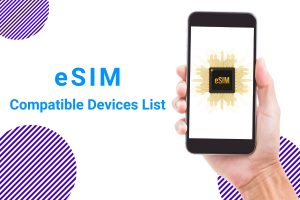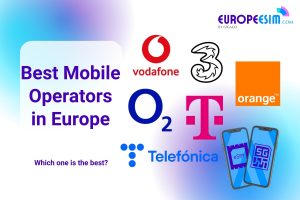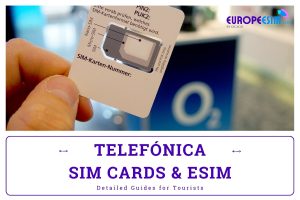T-Mobile is one of the largest mobile network operators in Europe and the EU, offering great coverage, speeds, and competitive rates across the continent. This makes T-Mobile SIM cards and eSIM plans very attractive options for tourists visiting Europe and the EU. In this comprehensive guide, we’ll cover everything you need to know about using T-Mobile connectivity during your travels in Europe, including:
Table of Contents
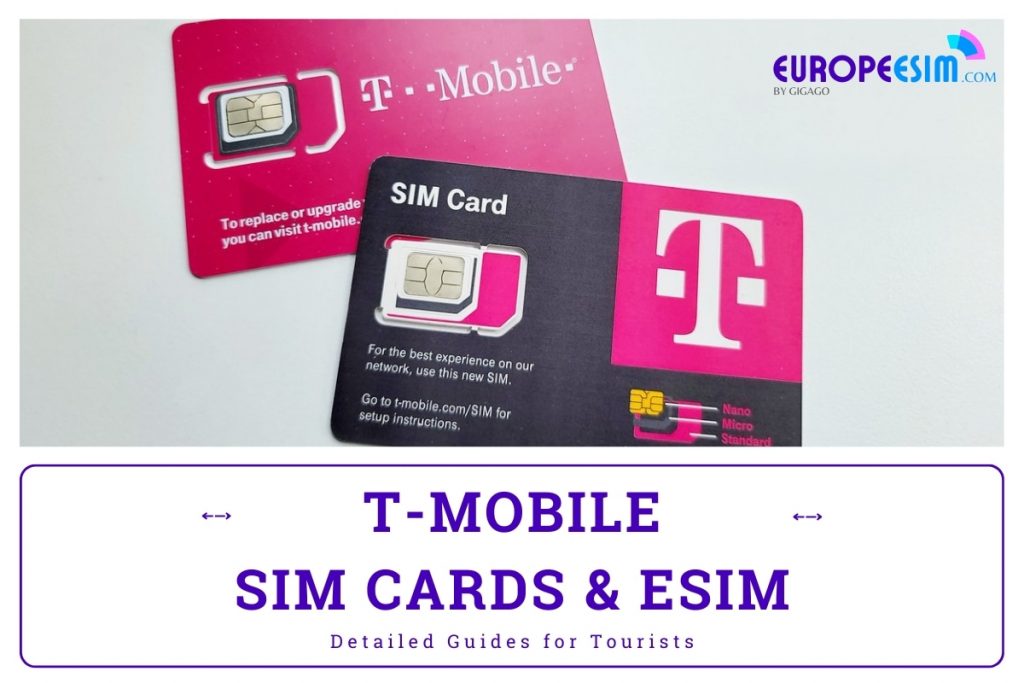
I. Quick facts about T-Mobile in Europe
T-Mobile/Deutsche Telekom is a German telecommunications company and mobile network operator. Some key facts about T-Mobile in Europe:
- Operates in 11 European countries: Austria, Bosnia and Herzegovina, Croatia, Czech Republic, Germany, Greece, Hungary, Montenegro, Poland, Romania, Slovakia
- T-Mobile has a combined total of approximately 230 million subscribers in Europe.
- T-Mobile’s subsidiaries operate GSM-, UMTS-, and LTE-based cellular networks in Europe. The company has financial stakes in mobile operators in both Central and Eastern Europe.
- T-Mobile offers a variety of mobile phone plans and services in Europe. These plans include both prepaid and postpaid options, as well as a variety of data, calling, and texting packages.
- T-Mobile also offers international roaming services in over 215 countries and destinations. This means that T-Mobile customers can use their phones abroad without incurring roaming charges.

II. T-Mobile coverage and speed in Europe
If you plan to use your T-Mobile phone while visiting Europe, it’s good to know what to expect in terms of coverage and data speeds.
1. T-Mobile coverage
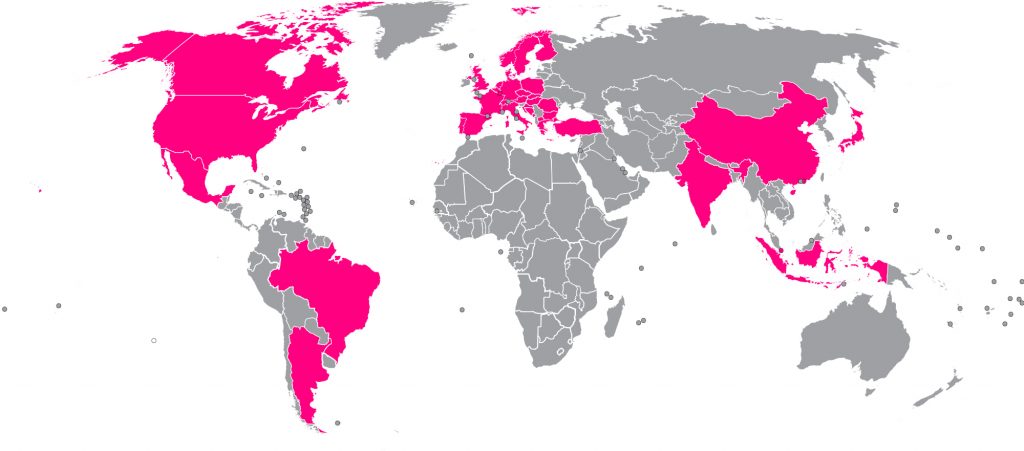
T-Mobile doesn’t have a direct presence in most of Europe, relying on partner networks for roaming services. Coverage and strength vary significantly depending on the country and region.
Here’s a breakdown by region:
Northern Europe:
- Coverage: Generally good in major cities and tourist areas of Scandinavia (Denmark, Sweden, Norway), Finland, and Iceland. Patchier in rural areas and remote islands.
- Strong Presence: Limited to partner networks, no direct T-Mobile infrastructure.
- Network: Primarily 4G LTE with some 5G availability in major cities.
Western Europe:
- Coverage: Varies significantly by country. Good in major cities and popular tourist areas of Germany, France, Spain, Portugal, and Belgium. Weaker in the Netherlands. Limited or no coverage in smaller countries like Luxembourg, Andorra, and Monaco.
- Strong Presence: Limited to partner networks, no direct T-Mobile infrastructure.
- Network: Primarily 4G LTE with some 5G availability in major cities.
Southern Europe:
- Coverage: Generally good in major cities and tourist areas of Italy, Spain, and Portugal. Weaker in Greece, Turkey, and Cyprus. Limited or no coverage in smaller countries like Malta and San Marino.
- Strong Presence: Limited to partner networks, no direct T-Mobile infrastructure.
- Network: Primarily 4G LTE with some 5G availability in major cities.
Eastern Europe:
- Coverage: Limited and inconsistent. Generally good in major cities of Poland, Czech Republic, and Hungary. Patchy or non-existent in most other countries, including Slovakia, Romania, Bulgaria, and the Balkans.
- Strong Presence: Limited to partner networks, no direct T-Mobile infrastructure.
- Network: Primarily 4G LTE, 5G availability very limited.
2. T-Mobile speed
T-Mobile offers varying levels of speed and coverage in different regions of Europe. Here’s a brief overview:
- Western Europe: T-Mobile offers good 4G and 5G coverage in most Western European countries like Germany, France, Spain, and the UK. You can expect speeds of up to 200-500 Mbps on 5G and 40-80 Mbps on 4G in major cities and urban areas.
- Eastern Europe: T-Mobile’s coverage in Eastern Europe is generally less extensive compared to Western Europe. 5G availability is limited, mainly concentrated in major cities.
- Northern Europe: T-Mobile has a strong presence in Scandinavia and other Northern European countries like Finland and Denmark. 5G is widely available in major cities and urban areas.
- Southern Europe: Like Eastern Europe, coverage varies across Southern European countries. Italy and Spain have good 5G and 4G coverage in major cities, while smaller countries like Greece might have limited 5G availability.
Important Notes:
- These are general estimations, and actual speeds can vary significantly depending on specific location, network congestion, and device capabilities.
- T-Mobile offers roaming plans with varying data allowances and speeds for different regions in Europe. Make sure to check your plan details before traveling to understand the specific coverage and speeds you can expect.
- Consider using online coverage maps provided by T-Mobile or independent sources for a more accurate picture of network availability and speed in your specific destination.
III. T-Mobile connectivity options for travelers to the EU
T-Mobile offers 3 main connectivity options for tourists visiting Europe and the EU:
| Option | Pros | Cons |
| Prepaid SIM Card | Cheapest, flexible plans, local features | Inconvenient setup, compatibility issues, language barrier |
| eSIM | Convenient, multiple profiles, eco-friendly | Limited phone support, limited plans, setup complexity |
| Roaming | Familiar experience, no setup | Expensive, not all plans included |
Recommendation: Ultimately, your best option will depend on your specific needs and budget. If you're on a tight budget and only need basic connectivity for a short trip, a prepaid SIM card/eSIM might be the way to go. If you want the convenience of using your existing phone and plan, but don't mind paying a bit more, roaming might be a good option. And if you want the flexibility of switching between providers and having a compatible phone, eSIM is a great choice.
IV. T-Mobile vs. Other European mobile operators
How does T-Mobile compare to other mobile operators in Europe? Here’s a quick overview:
- Vodafone: Vodafone is one of the largest mobile operators in the world, with operations in over 50 countries. It has a strong presence in Europe, with operations in Albania, Austria, Czech Republic, Germany, Greece, Hungary, Ireland, Italy, Netherlands, Portugal, Romania, Spain, Sweden, Turkey, and the United Kingdom.
- Orange: Orange is another major European mobile operator, with operations in over 30 countries. It has a strong presence in France, Spain, Poland, Slovakia, and Romania.
- Deutsche Telekom: Deutsche Telekom is the largest telecommunications company in Germany and has a strong presence in Europe, with operations in Austria, Czech Republic, Hungary, Montenegro, Poland, Romania, Slovakia, and the United States.
- Telefonica: Telefonica is a Spanish multinational telecommunications company with a strong presence in Europe and Latin America. It has operations in Spain, Germany, Brazil, Argentina, Chile, Peru, and Colombia.
Compared to other providers, the key advantages of Vodafone are:
- Coverage: T-Mobile has a strong presence in Europe, with operations in Austria, Croatia, Czech Republic, Germany, Hungary, Montenegro, North Macedonia, Poland, Romania, Slovakia, and the United States.
- Network: T-Mobile offers 4G and 5G networks in most of its European markets.
- Plans: T-Mobile offers a variety of prepaid and postpaid plans, with a range of data, voice, and text allowances.
- Pricing: T-Mobile’s pricing is generally competitive with other European mobile operators.
- Customer service: T-Mobile’s customer service has been rated as good by most independent reviewers.
T-Mobile remains strong in Europe with good networks, prices, and innovation. However, market fragmentation, price competition, and regulations pose challenges. Comparing them to major players like Vodafone, Orange, and Telefonica, as well as emerging challengers, is key to finding the best operator for your needs.
V. Best T-Mobile SIM cards for tourists & costs
T-Mobile offers T-Mobile Go5G plans for tourists coming to Europe with high-speed data, calling, and texting in European countries.
| Plan | Price (USD) | Data | Validity | Calling & Texting | Additional |
| T-Mobile Go5G Essential | 60 | 50GB in 5G/4G/LTE | 1 month | Unlimited | - |
| T-Mobile Go5G Plus | 90 | Unlimited | 1 month | Unlimited | In-flight connection Unlimited data in 215+ countries & destinations |
| T-Mobile Go5G Next | 100 | Unlimited | 1 month | Unlimited | In-flight connection Unlimited data in 215+ countries & destinationsUnlimited data in Canada & Mexico |
VI. Does T-Mobile support eSIM in Europe?
T-Mobile/Deutsche Telekom offers prepaid eSIM plans in many European countries, and international plans mentioned above also have the eSIM option.
eSIM allows cellular data on compatible unlocked phones and tablets without physical SIM. Convenient for dual SIM setups. Check the Europe eSIM Compatible Devices List to make sure that your phone can use T-Mobile eSIM.
VII. Where to buy a T-Mobile SIM card and eSIM?
When you need to purchase a SIM card from T-Mobile, either in physical or electronic form, there are a few different retail channels available to make your purchase.
1. Where to buy T-Mobile SIM card for EU travel
You can easily purchase a T-Mobile SIM at:
- T-Mobile retail stores: T-Mobile has retail stores located throughout the EU. You can find a store near you by visiting their website or using their store locator app.
- T-Mobile online store: You can also purchase a SIM card online directly from the T-Mobile/Deutsche Telekom website.
- Other retailers: Some other retailers, such as electronics stores and airports, may also sell T-Mobile SIM cards.
Note: Have your passport ready for identification and registration.
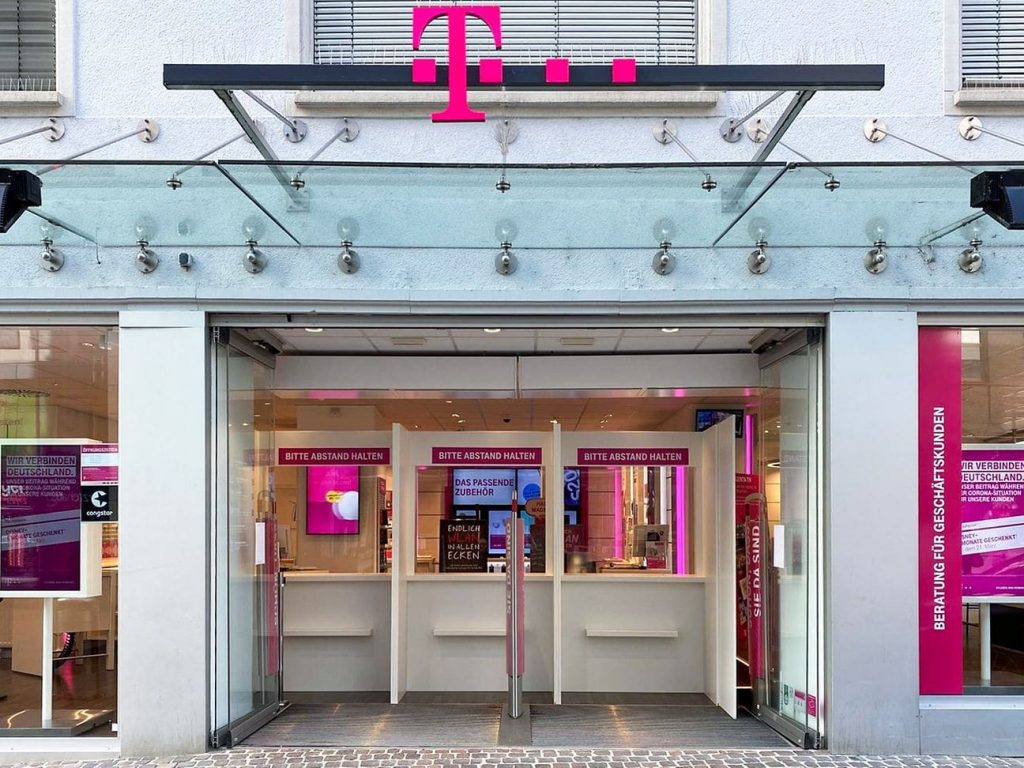
2. Where to buy T-Mobile eSIM
T-Mobile/Deutsche Telekom eSIMs are available through:
- Online: You can order an eSIM online through the T-Mobile website or another provider’s website. You will need to provide your account information and choose a plan. You will then be able to download a QR code that you can scan to activate your eSIM on your device.
- In-store: You can also purchase an eSIM in a T-Mobile store. A sales representative will help you select a plan and activate your eSIM on your device.
No passport required. Just ensure your phone is unlocked and eSIM compatible.
Ditch roaming fees in Europe with an eSIM from europe-esim.com. Fast 4G/5G on T-Mobile’s network, no ID needed – just buy online and get connected. Plans from 1 day up to 1 month. Get your Europe eSIM now!
VIII. How to use T-Mobile SIM card and eSIM
T-Mobile offers customers the option to use either a physical SIM card or an embedded SIM, also known as an eSIM, to activate their wireless service. This part will outline the different options and steps required to set up and use a T-Mobile SIM card or eSIM.
1. How to install and activate a T-Mobile SIM card
You only need to follow these simple steps and everything will be ready.
- Insert the SIM card: Locate the SIM card slot on your device
- Power on your device: Turn on your device and wait for it to recognize the SIM card
- Activate the SIM card: In most cases, the SIM card will be pre-activated
- Set up APN settings if you can not use the eSIM.
- Check your services.
2. How to install and activate T-Mobile eSIM
Getting started with a T-mobile eSIM (Deutsche Telekom eSIM) is quite easy as follows:
- Install the eSIM
- Activate the eSIM
- Set up the eSIM
- Start using the eSIM: Once the eSIM is activated and set up, you can start using its services.
Please check your detailed instructions below:
IX. T-Mobile Call & SMS rates in Europe
Thanks to EU roaming rules, T-Mobile’s call and SMS rates in Europe are the same domestic rates you get in your home country. For example:
- Data: Not included, buy roaming add-ons.
- Calls: Per-minute, $1.49-$5.99 depending on country. Add-ons for unlimited options.
- SMS: $0.50 send, $0.10 receive. Some add-ons offer unlimited.
So you can freely make calls and send texts without worrying about high roaming fees.
X. How to top-up your T-Mobile SIM card
There are several convenient ways to top-up your T-Mobile prepaid credit:
- Online: Using My T-Mobile website/app with a credit card
- Vouchers: Purchase top-up vouchers at stores across Europe
- Stores: Top-up in person at T-Mobile shops and other outlets
- ATMs: Some countries allow top-ups via local ATMs
Top-ups can be done instantly anytime, extending validity and data allowances.
XI. FAQs
1. Does a T-Mobile SIM card work in non-EU countries?
Yes, but roaming rates are expensive. Best to buy a local SIM in those countries.
2. Can I use a T-Mobile SIM in the USA or Canada?
No, T-Mobile Europe and T-Mobile US are separate companies. US SIMs don’t work in Europe either.
3. How long is my T-Mobile SIM card valid for?
Validity depends on the prepaid top-up amount, lasting 4-15 weeks typically. Monthly SIMs expire after 30 days.
4. How do I check my data balance on T-Mobile?
You can check the remaining data in My T-Mobile account, T-Mobile app, or by texting ‘status’ to the number given.
5. Can I use T-Mobile SIM on multiple devices?
Yes, most T-Mobile SIMs allow using data on multiple tablets, mobile hotspots, etc if within plan limits.
XII. Final words
In summary, T-Mobile SIM card/eSIM provides excellent, high-speed connectivity across Europe. Their wide coverage, EU roaming, prepaid plans, and eSIM support make them a top choice for hassle-free travel connectivity in the region. Just pop in a T-Mobile SIM or eSIM before your trip for smooth internet access anywhere in Europe.
